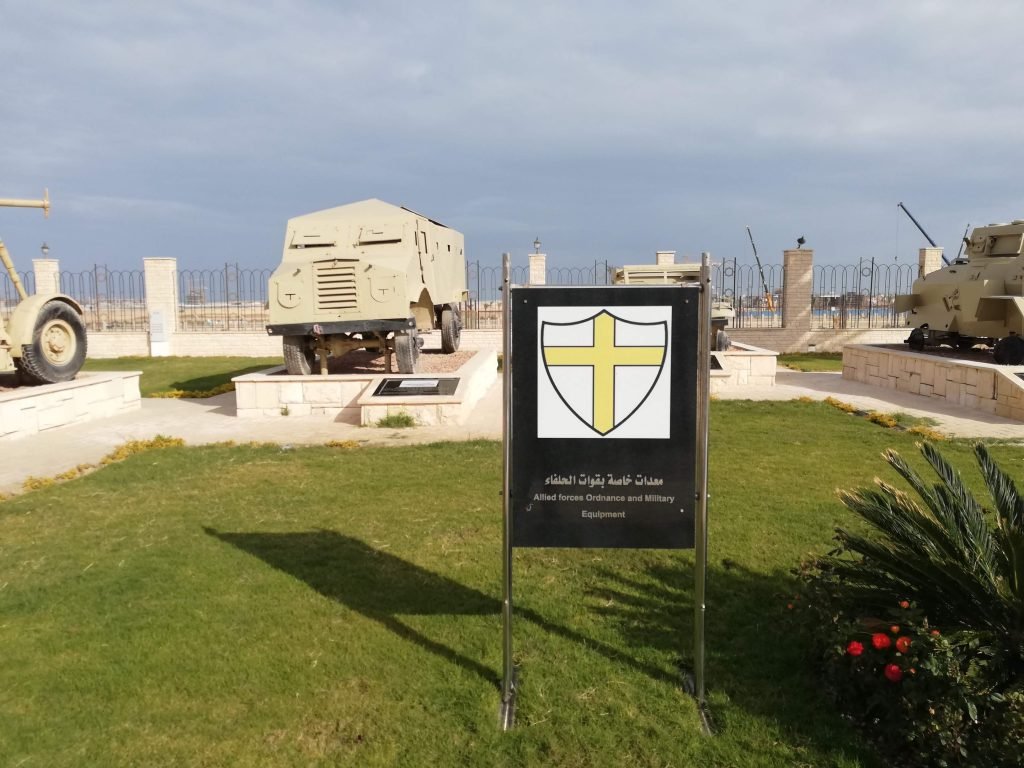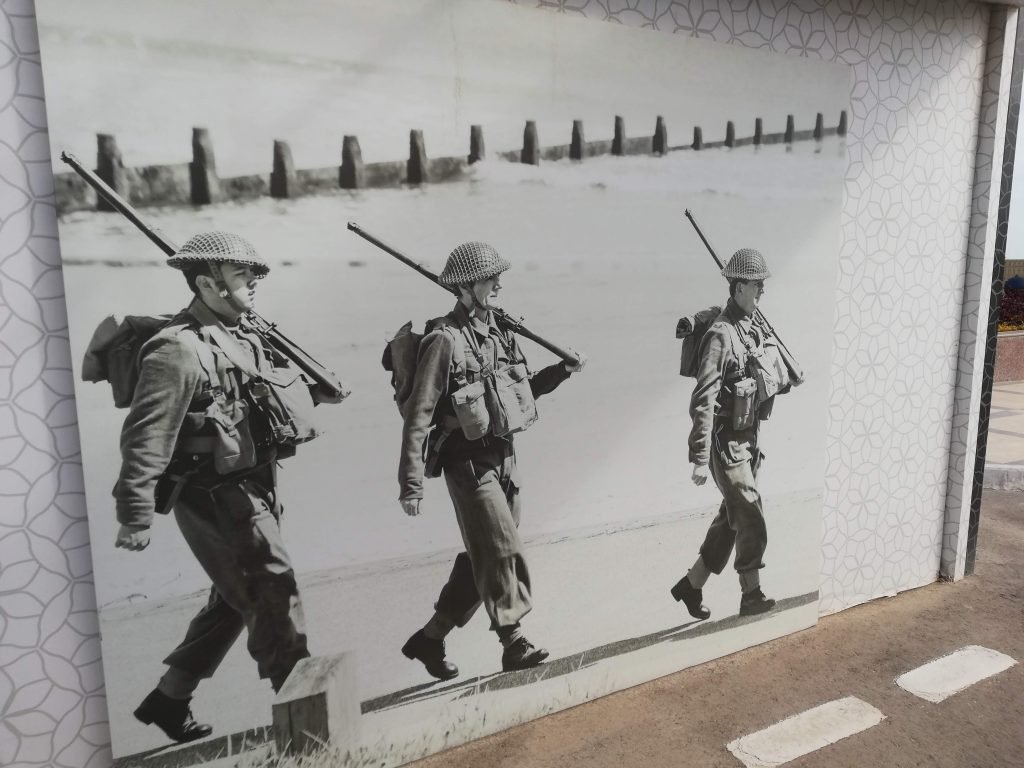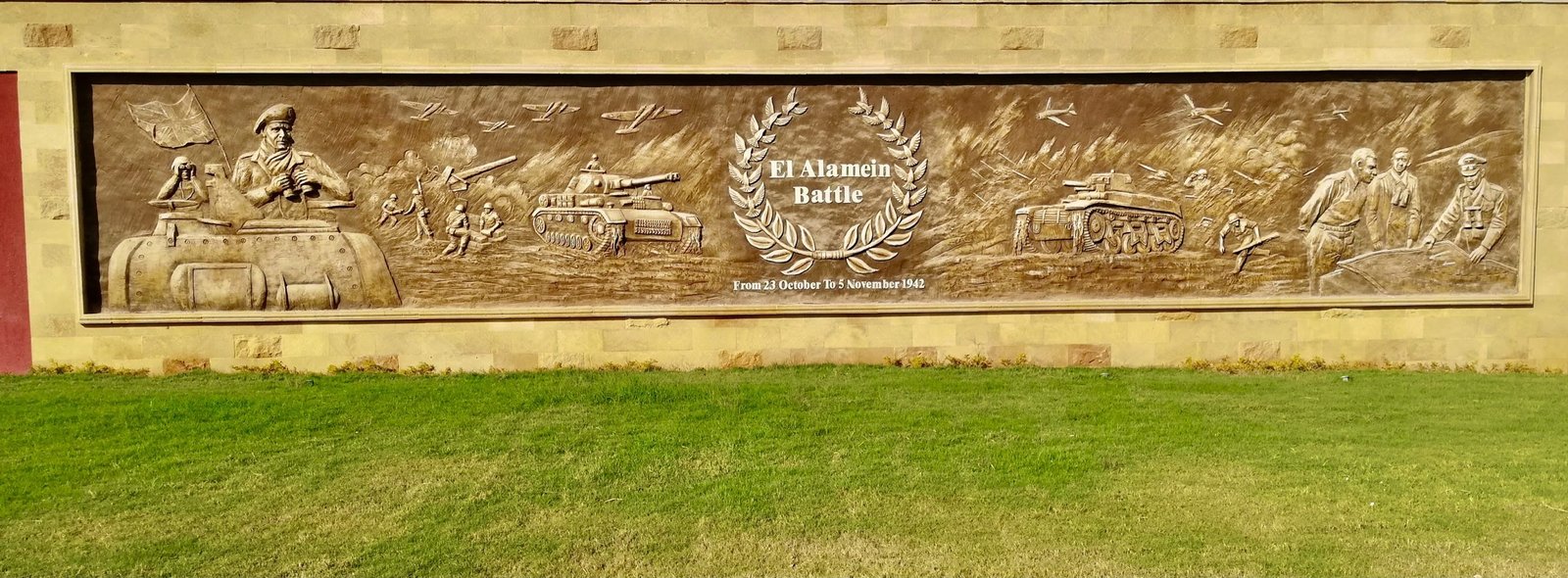Click here to Choose your Next Cheap Tour To Egypt The Price Starts From $25
Introduction
El Alamein is a name that echoes through history as a turning point in World War II. This small town in Egypt was the site of two pivotal battles that shaped the outcome of the war in the Middle East and North Africa. Today, the El Alamein War Museum and the cemeteries for Commonwealth and German soldiers stand as solemn reminders of the immense human cost of this conflict. In this comprehensive guide, we will take you on a journey through the historical events, exhibitions, and poignant memorials that make El Alamein a must-visit destination for anyone interested in the history of World War II.
You can Book Your Tour from here Alexandria Day Tour
The Significance of El Alamein in World War II
The First Battle
The First Battle of El Alamein took place in July 1942, following the fall of Tobruk. This confrontation was a defensive action by the British Eighth Army against the advancing German-Italian Panzer Army Africa, commanded by Field Marshal Erwin Rommel. Despite being heavily outnumbered, the British forces managed to halt the Axis advance, preventing them from reaching the vital Suez Canal.
The Second Battle
A few months later, in October 1942, the Second Battle of El Alamein was fought. This time, under the leadership of General Bernard Montgomery, the British Eighth Army launched a massive offensive against Rommel’s forces. The battle raged for nearly two weeks, and the Allied victory marked a significant turning point in the North African campaign. The Axis forces were forced to retreat, and El Alamein became synonymous with the beginning of the end for Axis control in the region.

The El Alamein War Museum: A Window into the Past
Overview of the Museum
The War Museum is a tribute to the soldiers who fought and died in the battles that took place in the region. Established in 1956, the museum features exhibits, artifacts, and displays that offer a comprehensive look at the history of the North African campaign during World War II.

Exhibitions and Displays
Visitors to the El Alamein War Museum can expect to find a wealth of information and historical items that showcase the experiences of the soldiers who fought in these battles. Exhibits include weapons, uniforms, and personal belongings, as well as dioramas and maps that help to paint a vivid picture of the events that unfolded during the First and Second Battles of El Alamein.
Outdoor Display of Military Vehicles and Artillery
In addition to the indoor exhibits, the museum grounds are home to an impressive collection of military vehicles and artillery used by both the Axis and Allied forces. Tanks, armored cars, and anti-aircraft guns are among the many pieces on display, providing a unique opportunity for visitors to get up close and personal with the machinery that played a crucial role in these historic battles.

The El Alamein Cemeteries: A Solemn Remembrance of Sacrifice
The Commonwealth Cemetery
The El Alamein Commonwealth Cemetery is the final resting place for over 7,000 soldiers from the United Kingdom, Australia, New Zealand, South Africa, India, and other countries that formed part of the British Commonwealth. The cemetery is meticulously maintained, with rows of white headstones set amidst beautifully landscaped gardens, offering a serene and peaceful place for reflection and remembrance.
The German Cemetery
Not far from the Commonwealth Cemetery lies the El Alamein German Cemetery, also known as the Deutscher Soldatenfriedhof. This cemetery is the final resting place for approximately 4,300 German soldiers who fought and died in the North African campaign. The cemetery features a central monument and rows of dark, granite headstones, creating a somber and dignified atmosphere for honoring the memory of those who lost their lives.
The Italian Cemetery
The El Alamein Italian Cemetery is another important memorial site in the area. It serves as the final resting place for around 5,200 Italian soldiers who fought in the North African campaign. This cemetery is characterized by its distinctive circular design, with headstones arranged in concentric circles around a central chapel. The Italian Cemetery is a testament to the sacrifices made by soldiers of all nationalities during the tumultuous events of World War II.
Visiting El Alamein: Tips and Practical Information
Getting to El Alamein
El Alamein is located approximately 105 kilometers west of Alexandria and can be reached by car or public transportation. Regular train services connect El Alamein with both Cairo and Alexandria, while buses are also available from these cities. Alternatively, visitors can opt for an organized tour or hire a private car to make the journey.
Best Time to Visit
The ideal time to visit El Alamein is during the cooler months of October through April, as the summer months can be extremely hot and uncomfortable. The area also hosts commemorative events and ceremonies on the anniversaries of the battles, which may be of interest to visitors looking for a deeper connection to the history of the region.
Accommodation Options
While El Alamein itself has limited accommodation options, the nearby Mediterranean coastline offers a range of hotels and resorts to suit various budgets and preferences. Visitors can choose to stay in one of these coastal locations and make day trips to the El Alamein War Museum and cemeteries.
Conclusion
The El Alamein War Museum and the Commonwealth, German, and Italian cemeteries offer a unique and poignant opportunity to delve into the history of the pivotal battles fought in this region during World War II. A visit to El Alamein is not only a chance to learn about the strategic importance of these battles but also an opportunity to pay respects to the thousands of soldiers who made the ultimate sacrifice for their countries. As you walk through the exhibits, marvel at the military machinery, and reflect on the serene beauty of the cemeteries, the events of El Alamein will come alive, providing a deeper understanding of the immense human cost of war.

